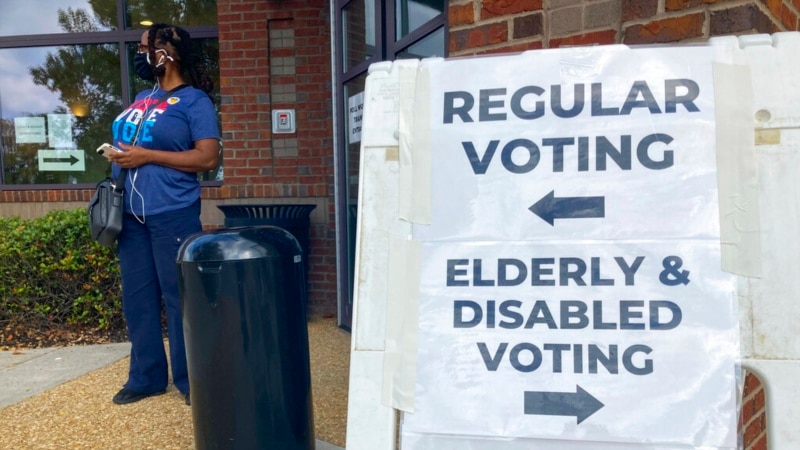When the US midterm elections are held in November, voters in several Republican-controlled states will have to cast ballots in congressional districts whose boundaries have been rejected by the courts.
In Alabama, Georgia, Louisiana and Ohio, congressional maps were drawn by Republican lawmakers after the 2020 census. Judges later determined they were either illegally drawn or possibly ultimately proven illegal in court.
However, the Supreme Court and other federal courts that followed his precedent have allowed the rejected maps to be used in this election and ruled out proposals to make them fairer.
The reasoning? A little-known legal concept that says judges should avoid changing voting rules when an election approaches, because that could lead to chaos and confusion and drive voters away from the polls.
Known as the “Purcell principle,” the concept grew out of a 2006 Supreme Court case known as Purcell Vs Gonzalez, which involved a legal challenge to voter ID requirements in Arizona. It was a midterm election and the Supreme Court dismissed the lawsuit.
In the 16 years since that ruling, the “Purcell principle” has become what Supreme Court Justice Brett Kavanaugh has called “the centerpiece of election law.”
That means that the magistrates must refrain from issuing court orders that alter the current voting rules, and this has happened. In 2020, the Supreme Court blocked changes intended to make it easier for voters to vote during the COVID-19 pandemic.
Critics say this prioritizes election administration over protecting the right to vote. Republicans have defended their maps.
Hans von Spakovsky, a former official at the conservative Heritage Foundation, says that “Purcell’s principle” is a “good rule” with an important purpose.
“Anyone who has a problem with a law or regulation [electoral] he has enough time before the election to file a lawsuit,” von Spakovsky said.
Districts are redrawn every decade
Contested congressional maps in all four states are considered “rigged,” a term with origins in early 19th-century US politics.
Every 10 years, following a constitutionally mandated census, US states redraw their congressional and legislative maps to reflect changes in their electorate.
Manipulation occurs when electoral district maps are redrawn for electoral gains, for example, grouping all opposition voters into a single district to reduce their influence in others.
The practice is legal in most states and followed by Democrats and Republicans alike. But when a map blatantly favors one group over another, it can violate state and federal laws.
The Voting Rights Act of 1965 prohibits racial discrimination of voters. Under the law, voters can seek judicial relief if they believe that an electoral practice or procedure, such as a new map, restricts their right to vote.
Under the Voting Rights Act, plaintiffs can also file claims of “vote attenuation,” which occurs when minority voters are unable to elect their preferred candidate due to rigging.
This is part of what the lawsuit against congressional maps in Alabama, Georgia and Louisiana claims.
Connect with the Voice of America! Subscribe to our channel Youtube and turn on notifications, or follow us on social media: Facebook, Twitter and Instagram.







![[Img #74664]](https://thelatestnews.world/wp-content/uploads/2024/12/James-Watson-The-controversial-genius-behind-the-double-helix-150x150.jpg)







